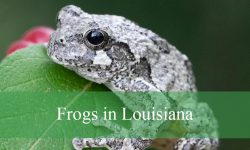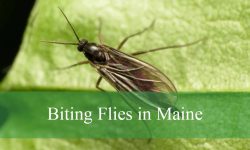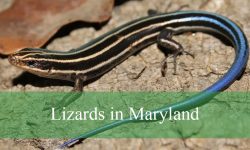Arkansas, with its mix of forests, wetlands, and farmlands, provides an ideal environment for countless insect species. While most of these creatures are harmless or play important roles in the ecosystem, some can pose significant dangers to people, pets, and even agriculture. Identifying the bugs that carry risks is an essential step in protecting yourself and your surroundings.
Among the most concerning insects and arachnids in Arkansas are those with venomous bites or stings, such as the Brown Recluse and Black Widow spiders, or the aggressive Red Imported Fire Ant. Others, like mosquitoes and Kissing Bugs, raise concerns because of their ability to transmit diseases. Additionally, invasive species such as the Emerald Ash Borer and Japanese Beetle threaten both the natural environment and local economies by devastating trees and crops.
This guide highlights ten of the most dangerous bugs in Arkansas, complete with identification details and explanations of the threats they pose. By learning how to recognize these pests and understanding the risks they carry, residents can take practical steps to avoid encounters and minimize harm.
Types of Dangerous Bugs in Arkansas
Brown Recluse Spider
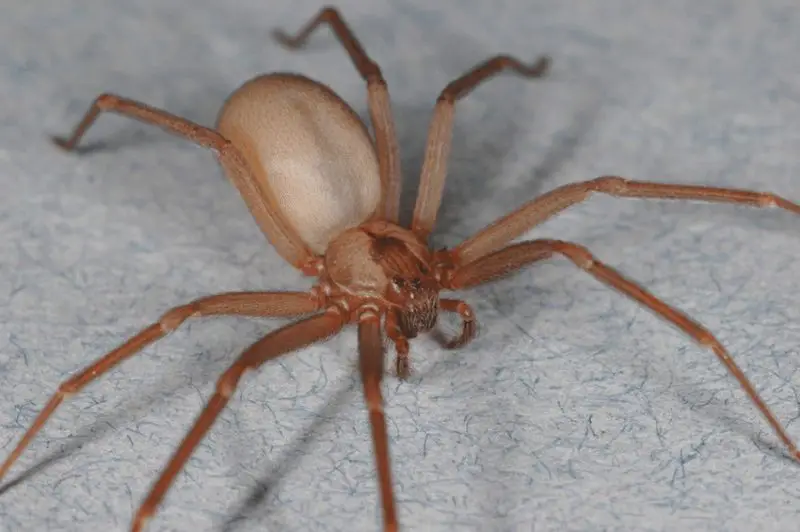
The Brown Recluse Spider (Loxosceles reclusa) is among the most feared spiders in Arkansas, and for good reason. This small, light-to-dark brown arachnid is identifiable by the violin-shaped marking on its cephalothorax, giving it the nickname “fiddleback spider.” Brown Recluse Spiders are not aggressive by nature, but they will bite if they feel threatened or trapped against the skin. They are commonly found in dark, undisturbed areas such as closets, attics, basements, or woodpiles.
The venom of the Brown Recluse contains cytotoxins that can destroy skin and soft tissue around the bite. While some bites heal quickly and leave little trace, others develop into necrotic ulcers that expand over time. In severe cases, the wound may take weeks or even months to heal, leaving behind permanent scarring. The reaction depends on the individual’s immune response and the amount of venom injected.
Although deaths from Brown Recluse bites are extremely rare, the medical complications can be serious. Secondary infections, tissue death, or systemic symptoms such as fever, chills, and malaise may occur. Because of the potential for rapid tissue destruction, medical attention is recommended if someone suspects a bite. Early treatment can help prevent complications and reduce the risk of long-term damage.
Preventing encounters with Brown Recluse Spiders involves keeping storage areas clean and clutter-free, sealing cracks in the home, and shaking out clothing or shoes before wearing them. Pest control measures may also be necessary if infestations are suspected. This spider’s reputation makes it one of the most dangerous arthropods in Arkansas households.
Black Widow Spider
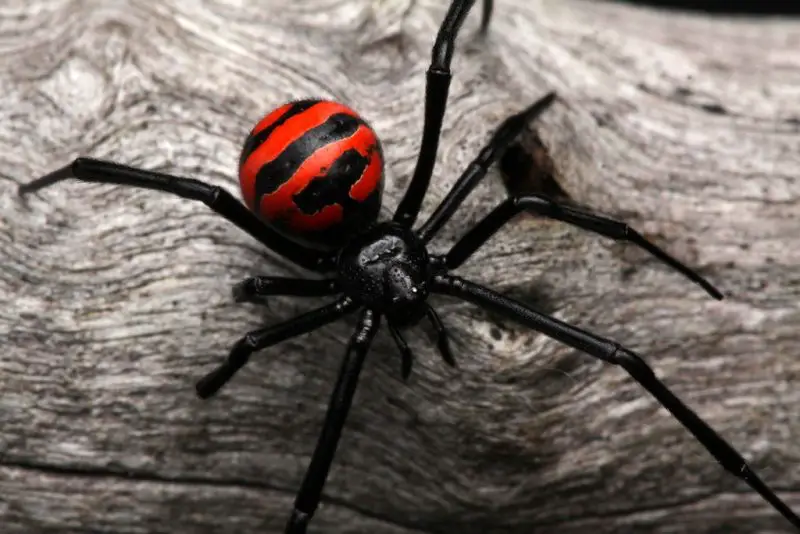
The Black Widow Spider (Latrodectus mactans) is another venomous spider found in Arkansas. It is easily identified by its glossy black body and the red hourglass marking on the underside of its abdomen. Black Widows prefer dark, sheltered areas such as woodpiles, sheds, garages, or crawl spaces. Like the Brown Recluse, they are not typically aggressive, but they will defend themselves if disturbed.
What makes the Black Widow so dangerous is its potent neurotoxic venom. A single bite injects venom that disrupts nerve signals, causing severe pain that may spread from the bite site to larger muscle groups. Symptoms include muscle cramps, abdominal rigidity, nausea, dizziness, and profuse sweating. While fatalities are extremely rare in healthy adults, children, the elderly, and those with pre-existing health conditions are more vulnerable to severe effects.
Medical intervention is often required for serious cases. Antivenom is available but reserved for life-threatening situations due to possible allergic reactions. More commonly, doctors manage symptoms with pain relief, muscle relaxants, and supportive care. Most patients recover fully within a few days, but the painful experience makes encounters with Black Widows memorable and frightening.
Reducing the risk of Black Widow bites requires wearing gloves when handling firewood or debris, sealing cracks and crevices, and reducing clutter in sheds or outdoor storage spaces. Awareness and caution go a long way in avoiding this spider, which remains one of the most venomous in North America.
Kissing Bugs (Triatomine Bugs)
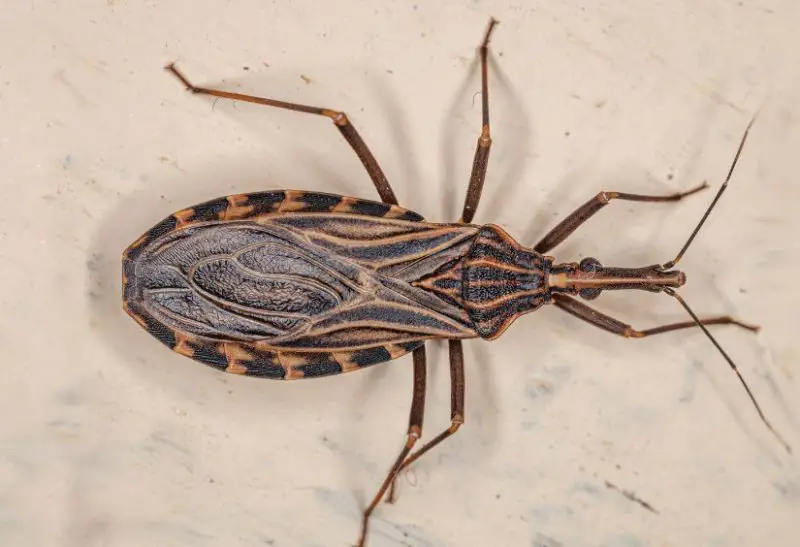
Kissing Bugs, also called Triatomine Bugs, are blood-feeding insects found in Arkansas and other parts of the southern United States. They are nocturnal and tend to bite humans around the mouth or eyes while people sleep, which earned them their unusual name. These insects are usually dark brown or black with orange or red stripes along their abdomen, making them distinct from other harmless beetles or true bugs.
The primary danger from Kissing Bugs is their ability to transmit the parasite Trypanosoma cruzi. This parasite causes Chagas disease, a serious illness more common in Central and South America but occasionally reported in the southern U.S., including Arkansas. Transmission occurs not directly through the bite, but when the insect’s infected feces enters the bite wound or mucous membranes. This makes it especially risky when the person unknowingly scratches the area after being bitten.
Chagas disease can be life-threatening if untreated. Early symptoms include fever, fatigue, swelling around the bite site, and enlarged lymph nodes. If the infection becomes chronic, it may lead to severe complications such as heart enlargement, arrhythmias, or digestive system disorders. Although cases in Arkansas are relatively rare, the potential severity of the disease makes Kissing Bugs a real public health concern.
Preventing Kissing Bug bites involves sealing homes against insect entry, using screens on windows and doors, and avoiding leaving outdoor lights on at night, which can attract the insects. People living in rural or wooded areas should be particularly cautious. Increased awareness helps reduce the risk of this silent but dangerous threat.
Red Imported Fire Ants
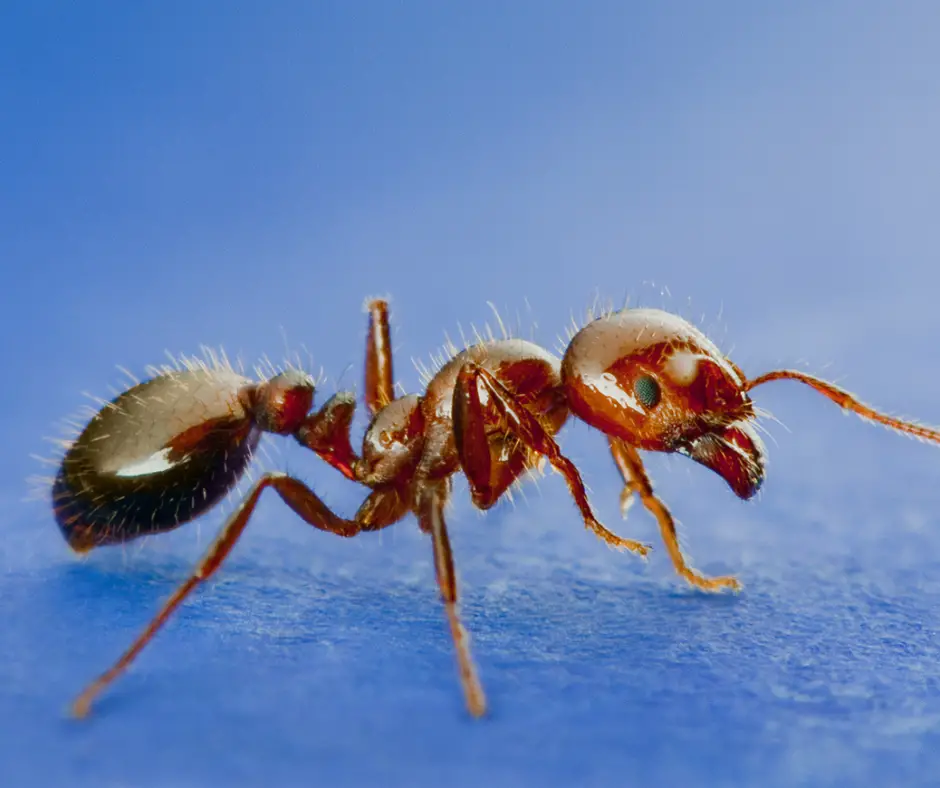
Red Imported Fire Ants (Solenopsis invicta) are invasive insects that have spread throughout much of the southern United States, including Arkansas. They are reddish-brown in color and live in large colonies that build dome-shaped mounds in open areas such as fields, lawns, and parks. Fire Ants are extremely aggressive and will swarm quickly when their nest is disturbed.
The sting of a Red Imported Fire Ant is painful and distinct. Unlike ordinary ants, fire ants inject venom with each sting, creating a burning sensation followed by itchy pustules that can last for days. When multiple ants attack at once, dozens of stings can leave a victim covered in painful welts. These stings are not just irritating—they can pose serious health risks.
For some individuals, fire ant venom triggers allergic reactions ranging from localized swelling to life-threatening anaphylaxis. Victims who experience difficulty breathing, chest pain, or dizziness after multiple stings require immediate medical attention. Because of their aggressive behavior and ability to sting in large numbers, fire ants are considered one of the most dangerous invasive species in Arkansas.
Preventing fire ant encounters involves avoiding their mounds, wearing protective clothing when working outdoors, and treating infested areas with ant baits or insecticides. Controlling fire ants can be challenging due to their large colonies and rapid reproduction, but awareness and caution are essential to reducing risks.
Mosquitoes (including Asian Tiger Mosquito)
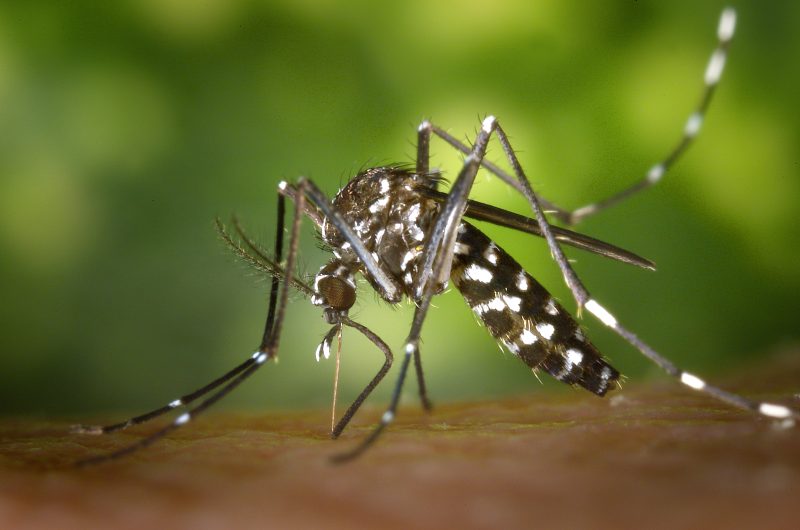
Mosquitoes are perhaps the most widespread and persistent insect threat in Arkansas. Several species are present in the state, including the Asian Tiger Mosquito (Aedes albopictus), which is particularly aggressive and active during the daytime. These mosquitoes breed in standing water, from ponds and marshes to small containers in backyards, making them common around homes and communities.
The primary danger of mosquitoes lies in their ability to spread diseases. In Arkansas, the most notable mosquito-borne illness is West Nile virus, which can cause flu-like symptoms, encephalitis, or meningitis in severe cases. While cases of dengue and Zika are rare in the state, the presence of Asian Tiger Mosquitoes raises concern because they are capable of transmitting these diseases in the right conditions.
Even without disease transmission, mosquito bites can be irritating and may lead to secondary skin infections if scratched excessively. For people with allergies, mosquito bites may cause large, itchy welts and prolonged discomfort. Because they are so numerous, mosquitoes are considered the most dangerous insect group worldwide, responsible for more human deaths than any other creature.
Prevention is key to managing mosquitoes. Eliminating standing water, using insect repellent, installing window screens, and wearing long sleeves and pants outdoors can significantly reduce exposure. Mosquito control programs also help limit their populations, but vigilance at the household level remains the best defense.
Emerald Ash Borer
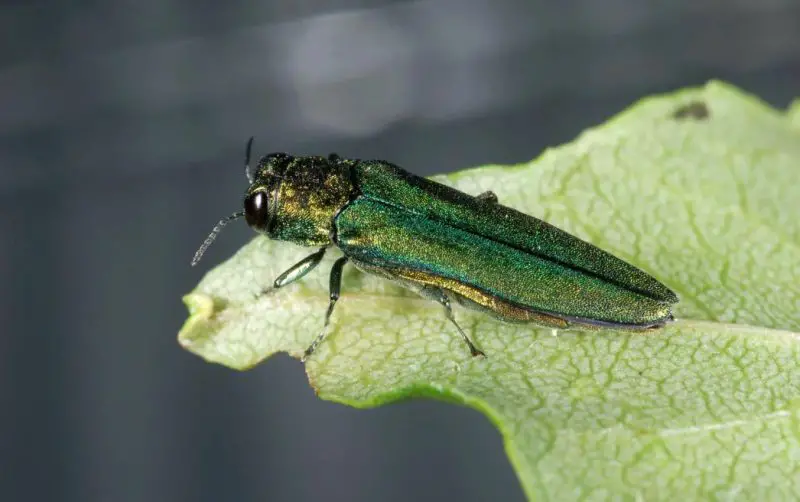
The Emerald Ash Borer (Agrilus planipennis) is an invasive beetle that has caused widespread devastation to ash trees across the United States, including Arkansas. Native to Asia, this metallic green beetle was first detected in the U.S. in 2002 and has since spread rapidly. Adult beetles themselves do little damage, but it is their larvae that cause the most destruction by feeding on the inner bark of ash trees.
When the larvae tunnel beneath the bark, they disrupt the tree’s ability to transport water and nutrients. Over time, the tree begins to show thinning of the canopy, bark splitting, and ultimately, death within a few years of infestation. In many areas of Arkansas, once healthy ash trees have been completely wiped out due to this invasive pest, leaving behind ecological voids in forests and urban landscapes.
The economic impact of the Emerald Ash Borer is also significant. Ash wood is highly valued for making furniture, flooring, and even baseball bats. Communities also face enormous costs in removing dead or dying trees that pose safety hazards. The beetle’s spread has forced state and federal agencies to invest heavily in monitoring, quarantine efforts, and biological control programs.
Preventing further damage involves avoiding the transport of firewood, which can carry larvae hidden under bark, and planting tree species other than ash in affected areas. Research into natural predators and resistant ash varieties offers hope for long-term control, but the Emerald Ash Borer remains one of the most destructive forest pests in Arkansas.
Japanese Beetle
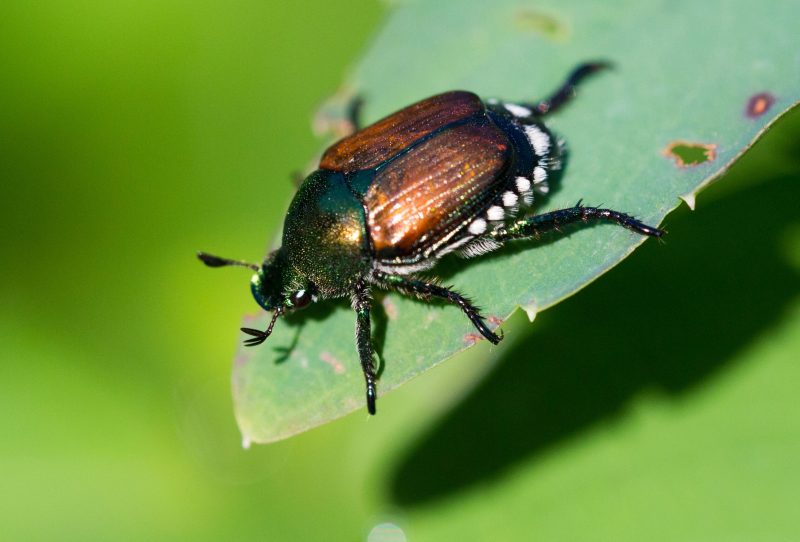
The Japanese Beetle (Popillia japonica) is another invasive insect in Arkansas that wreaks havoc on agriculture and ornamental plants. Originally from Japan, it was introduced to the United States in the early 20th century and has since spread widely. Adult beetles are easily recognized by their shiny metallic green bodies and copper-colored wing covers.
These beetles are voracious feeders, targeting over 300 plant species including roses, grapes, corn, soybeans, and fruit trees. They skeletonize leaves by eating the tissue between the veins, leaving behind a lace-like appearance. Flowers and fruits are also heavily damaged, making them a major nuisance for farmers, gardeners, and homeowners alike.
The larvae, known as white grubs, also cause problems by feeding on the roots of grasses. This damages lawns, golf courses, and pastures, often creating brown patches of dead grass. Because the beetles attack both above and below ground, their impact on landscapes and agriculture is extensive.
Management of Japanese Beetles requires a combination of strategies, including hand-picking adults, using pheromone traps cautiously, applying insecticides, and introducing biological controls like parasitic wasps. Despite these efforts, their widespread presence makes them one of the most difficult pests to fully control in Arkansas.
Stink Bugs (Brown Marmorated Stink Bug)
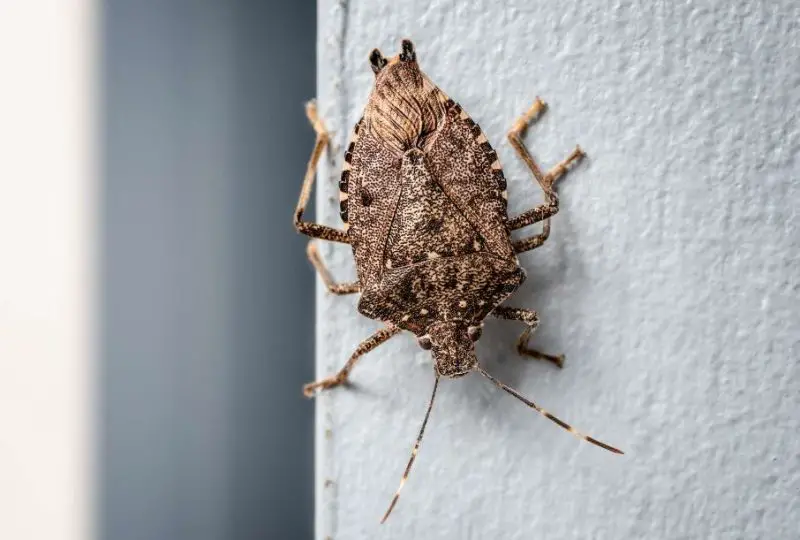
Stink Bugs, particularly the invasive Brown Marmorated Stink Bug (Halyomorpha halys), are significant agricultural pests in Arkansas. Native to Asia, they were first detected in the U.S. in the late 1990s and have since spread rapidly. Stink bugs are shield-shaped insects that emit a pungent odor when threatened or crushed, which is how they got their name.
These insects feed on a wide variety of fruits, vegetables, and row crops by piercing plant tissue and sucking out the juices. This feeding leaves behind scars, deformities, and discoloration that reduce the market value of crops. Apples, peaches, corn, tomatoes, and soybeans are among the many plants at risk. In severe infestations, entire harvests may be compromised.
Beyond agriculture, stink bugs are also household nuisances. They often invade homes in large numbers during the fall as they seek warm places to overwinter. While they do not bite humans or spread disease, their smell and presence in living spaces can be overwhelming.
Managing stink bug populations involves sealing entry points in homes, using traps, and applying insecticides in agricultural settings. However, because they are resilient and reproduce quickly, complete eradication is unlikely. They continue to be a major pest in Arkansas farming regions and suburban neighborhoods alike.
Cockroaches
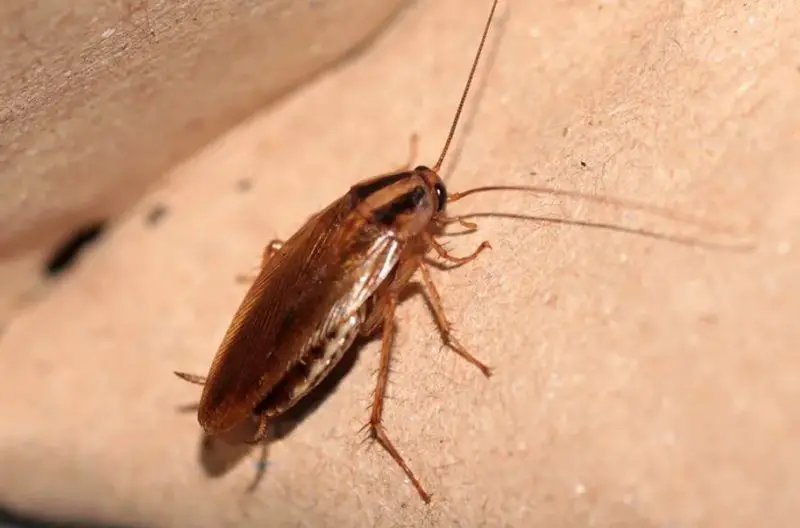
Cockroaches are among the most persistent household pests in Arkansas and across the world. Several species are present in the state, including the German Cockroach (Blattella germanica) and the American Cockroach (Periplaneta americana). These insects thrive in warm, humid environments and are commonly found in kitchens, bathrooms, and basements where food and water are readily available.
The primary danger of cockroaches lies in their ability to spread disease. They carry bacteria such as Salmonella and E. coli on their bodies and in their droppings, contaminating food and kitchen surfaces. This makes them vectors for food poisoning and other gastrointestinal illnesses. In addition, their shed skins and feces can trigger asthma attacks and allergic reactions, particularly in children.
Cockroaches are notoriously difficult to control because they reproduce rapidly and adapt to many environments. A single female can produce hundreds of offspring in her lifetime, and their nocturnal behavior makes infestations difficult to detect until populations are already large. Their resilience has earned them a reputation as nearly indestructible pests.
Preventing cockroach infestations requires strict sanitation, sealing cracks and crevices, and reducing access to food and water sources. In severe cases, professional pest control is necessary to eliminate established populations. Because of their health risks and resilience, cockroaches remain one of the most troublesome pests in Arkansas homes.
Striped Bark Scorpion
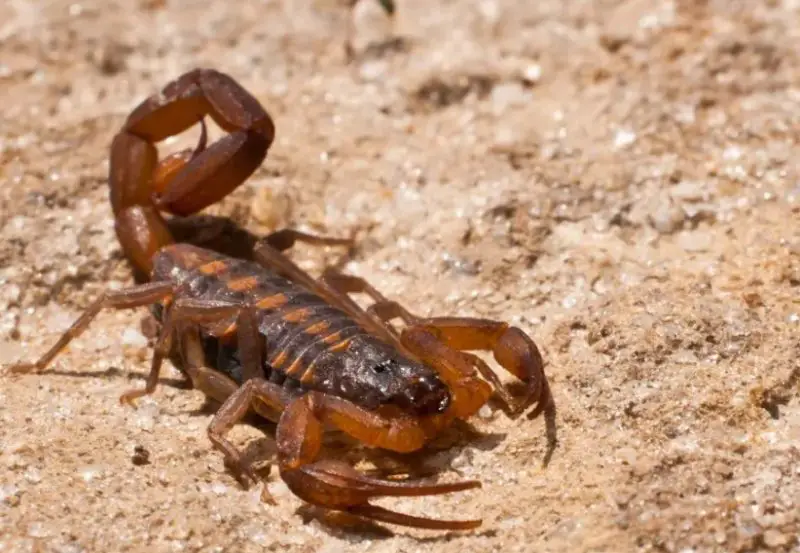
The Striped Bark Scorpion (Centruroides vittatus) is the most common scorpion species in Arkansas. It is typically pale yellow or tan with two dark stripes running down its back, making it easy to recognize. These scorpions prefer hiding in woodpiles, under rocks, or inside barns and sheds, but they sometimes enter homes in search of shelter.
When threatened or accidentally stepped on, the Striped Bark Scorpion delivers a painful sting. The venom is not usually life-threatening to healthy adults, but it causes burning pain, swelling, and numbness around the sting site. The discomfort can last for several hours and is often compared to that of a wasp or bee sting, though sometimes more intense.
For sensitive individuals, particularly young children, the elderly, or those allergic to insect venom, the sting can be more dangerous. Symptoms may include difficulty breathing, nausea, muscle spasms, or in rare cases, severe allergic reactions requiring emergency medical treatment. While fatalities are extremely rare, the potential for serious reactions means these scorpions should not be taken lightly.
Avoiding encounters with the Striped Bark Scorpion involves wearing gloves when handling firewood, checking shoes and bedding in infested areas, and sealing cracks in homes. Pest control may be necessary if scorpions become a recurring problem indoors. Their painful sting and ability to adapt to human environments make them a notable threat in Arkansas.
FAQs about Dangerous Bugs in Arkansas
What is the most dangerous bug in Arkansas?
The Brown Recluse Spider and the Black Widow Spider are considered the most dangerous bugs in Arkansas. Both have venom that can cause serious medical issues, although fatalities are extremely rare with modern medical care.
Can Kissing Bugs in Arkansas really spread Chagas disease?
Yes, Kissing Bugs can carry the parasite Trypanosoma cruzi, which causes Chagas disease. However, cases of transmission in Arkansas are uncommon. Still, the risk exists, and preventing bites is important for protection.
Are Red Imported Fire Ant stings deadly?
Most people experience painful stings and pustules from Red Imported Fire Ants, but in rare cases, their venom can trigger severe allergic reactions or anaphylaxis. Medical attention is needed if someone has difficulty breathing, chest pain, or dizziness after being stung.
What diseases do mosquitoes spread in Arkansas?
Mosquitoes in Arkansas can transmit West Nile virus, which may lead to encephalitis or meningitis in severe cases. Although rare, species such as the Asian Tiger Mosquito also have the potential to spread dengue or Zika if conditions allow.
Are scorpions in Arkansas dangerous?
The Striped Bark Scorpion is the most common species in Arkansas. Its sting is very painful and may cause swelling, but it is usually not life-threatening to healthy adults. Children, elderly individuals, or people allergic to venom should take extra precautions.
How can I protect my home from dangerous bugs?
You can reduce risks by sealing cracks in your home, keeping storage areas clean, removing standing water to prevent mosquitoes, and wearing protective clothing outdoors. Professional pest control may be necessary for severe infestations.

